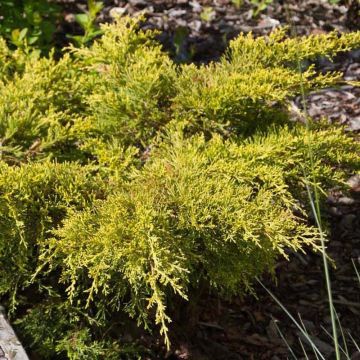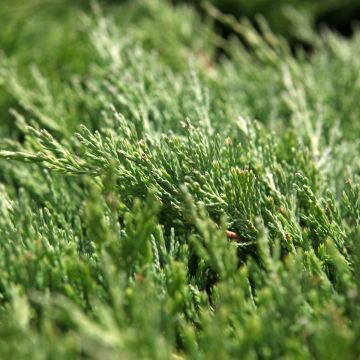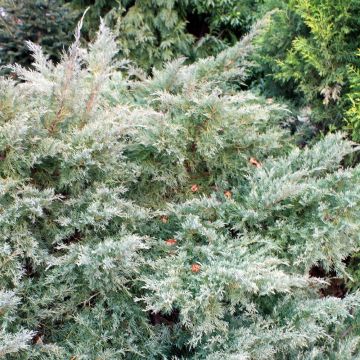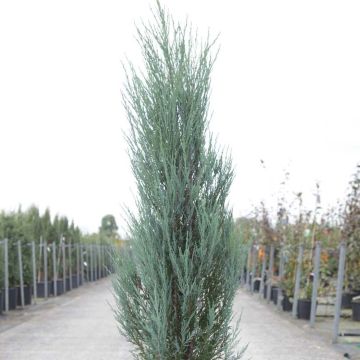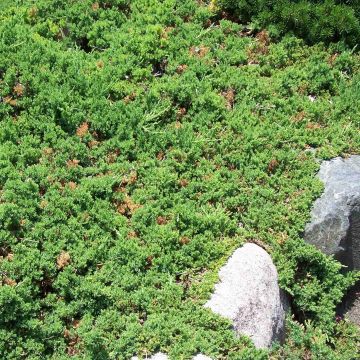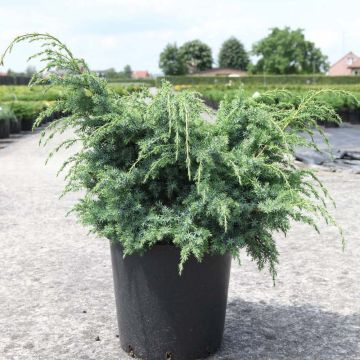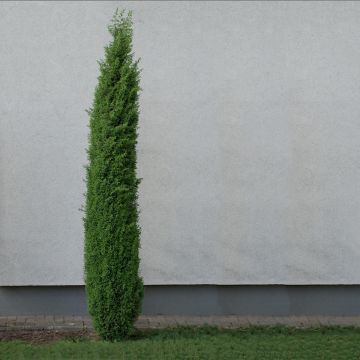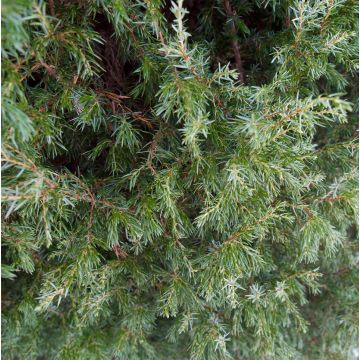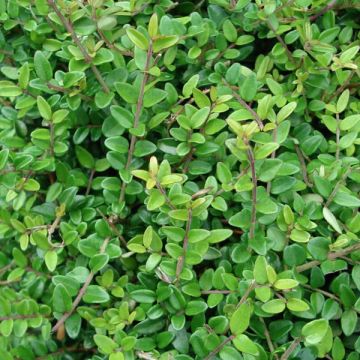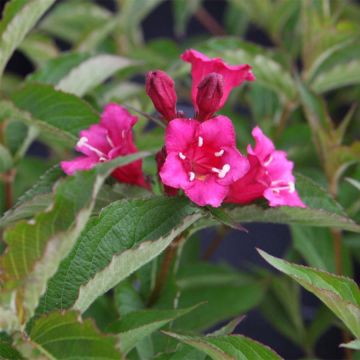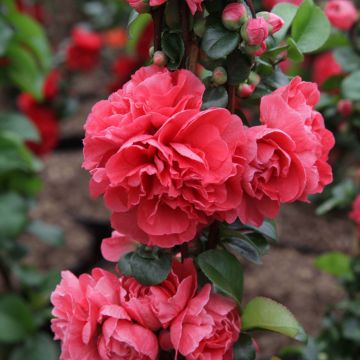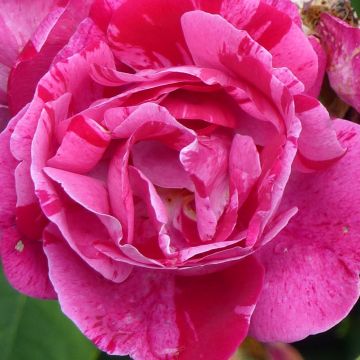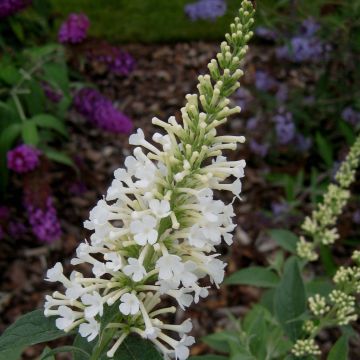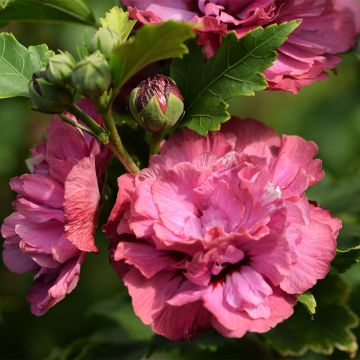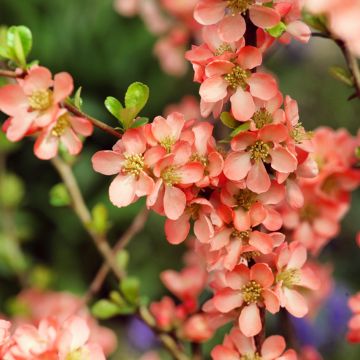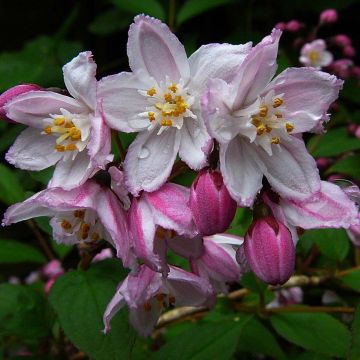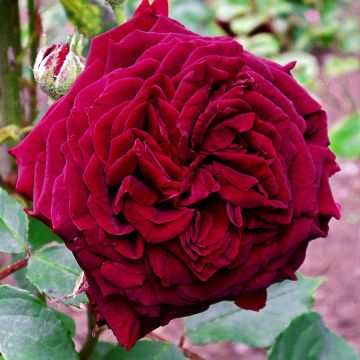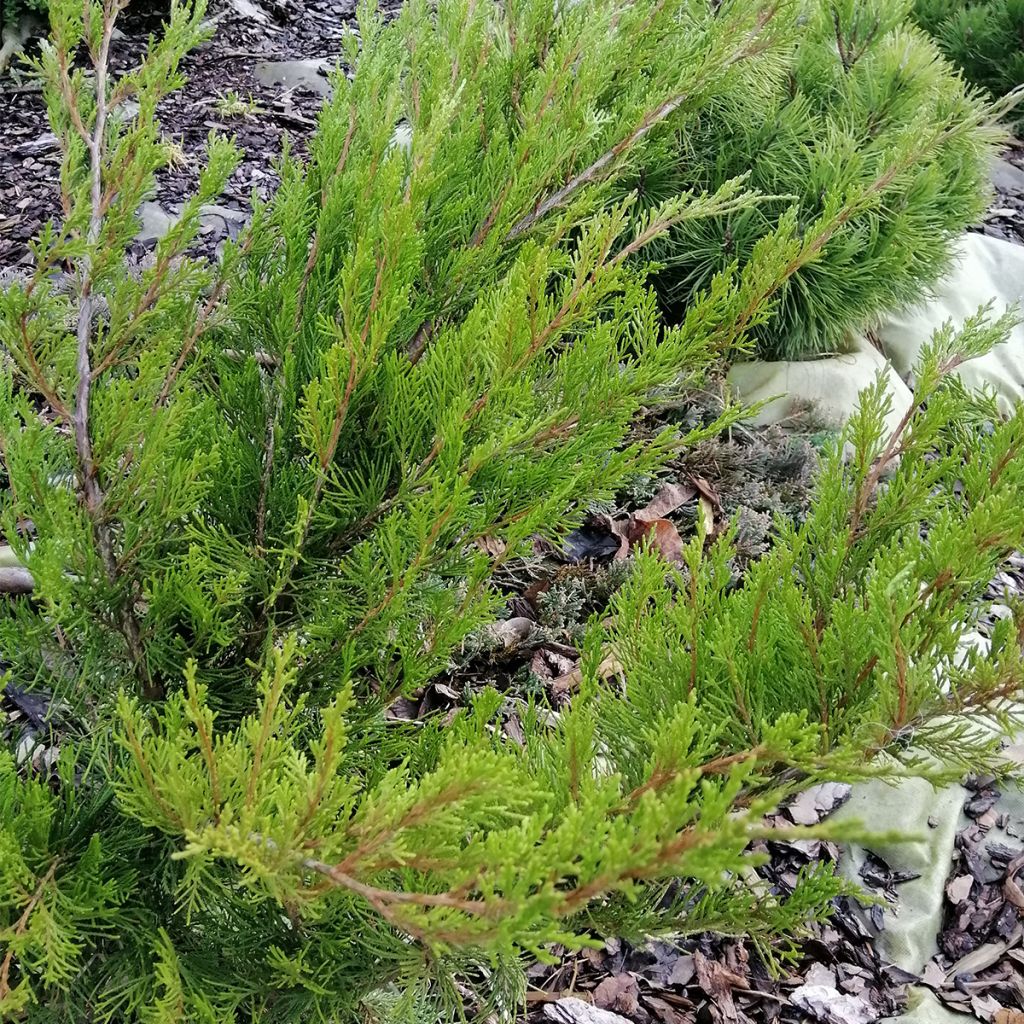

Juniperus media Mint Julep
Juniperus media Mint Julep
Juniperus x media Mint Julep
Juniper
This item cannot be shipped to the selected country
Delivery charge from €5.90
Delivery charge from €5.90
Delivery charge from €5.90
Delivery to Corse prohibited
More information
Schedule delivery date,
and select date in basket
This plant carries a 24 months recovery warranty
More information
We guarantee the quality of our plants for a full growing cycle, and will replace at our expense any plant that fails to recover under normal climatic and planting conditions.
From €5.90 for pickup delivery and €6.90 for home delivery
Express home delivery from €8.90.
From €5.90 for pickup delivery and €6.90 for home delivery
Express home delivery from €8.90.
From €5.90 for pickup delivery and €6.90 for home delivery
Express home delivery from €8.90.
Delivery to Corse prohibited: UE law prohibits the import of this plant from mainland France to Corse as part of the fight against Xylella fastidiosa. Please accept our sincere apologies.
More information
Does this plant fit my garden?
Set up your Plantfit profile →
Description
Juniperus x media 'Mint Julep' is a lovely variety of Juniper obtained through cross-breeding. Its main attraction lies in the colour of its delicate foliage, a beautiful mint green that lightens at the tips of the branches. These branches are arranged in layers, giving a spread-out tabular appearance to this conifer. Wider than it is tall, it can be placed in flower beds or as a standalone on a short grass lawn. Hardy and resilient, it adapts to most growing conditions.
Belonging to the Cupressaceae family, like Chamaecyparis, Thuja, and Cupressus, Juniperus are widely used as ornamental plants, both as species and more often for their varieties and hybrids. This is the case with Juniperus x media, which is the result of a cross-breeding between J. chinensis, originating from Asia, and J. sabina, a creeping bush widespread in Asia, Europe, and North Africa. As for the 'Mint Julep' variety, it was obtained in 1960 by Monrovia Nurseries in the United States, which are among the largest in the world (with 4 production sites in different states, including the historic 240-hectare site in California!).
'Mint Julep' was selected for its foliage colour. The "Mint Julep" is an alcoholic cocktail from the southern United States that includes mint. This conifer indeed features mint green foliage that lightens towards the tips of the branches. Its delicate foliage, made up of fine non-spiny leaves, is arranged in successive tiers oriented outward. In 10 years, this bush reaches a spread of 2.5 m (8.2 ft) and a height of 1.5 m (4.9 m), and will ultimately grow up to 3 m (9.8 ft) wide. Its inconspicuous flowers produce small white-yellow berries. Extremely adaptable, it grows in almost all types of soils, from acidic to calcareous, dry to moderately moist, but especially well-drained. Resistant to cold (down to about -20° C (-4° F)), it is not affected by atmospheric pollution, making it a good plant for urban gardens. It can be planted in full sun or partial shade, which it tolerates better than other juniper varieties. Juniperus x media 'Mint Julep' is an ideal plant for beginners in gardening thanks to its robustness.
This conifer is a great choice for covering slopes, as it withstands drought well and its dense foliage leaves no room for unwanted weeds. It can also be used as a standalone on a short grass lawn or in flower beds alongside other plants. In challenging soil and humidity conditions, beautiful colour contrasts can be created by pairing it with purple bushes like Cotinus 'Royal Purple' or Physocarpus 'Diabolo'. Its beautiful mint green will also be enhanced by the proximity of golden or variegated yellow foliage, such as Buddleia 'Masquerade', which is also remarkable with its large panicles of violet flowers. A small Caryopteris 'Sterling Silver' with greyish foliage and blue flowers will create a gentle scene alongside our juniper.
Report an error about the product description
Juniperus media Mint Julep in pictures
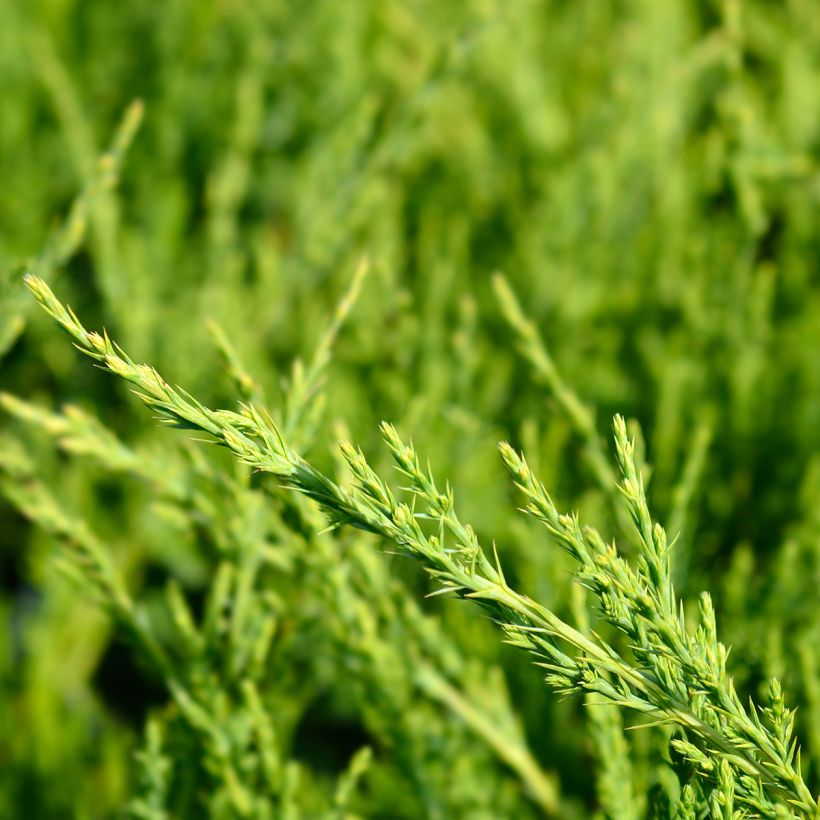

Plant habit
Flowering
Foliage
Safety measures
Botanical data
Juniperus
x media
Mint Julep
Cupressaceae
Juniper
Cultivar or hybrid
atteinterespiratoire
Cette plante peut entraîner des symptômes allergiques.
Evitez de la planter si vous ou vos proches souffrez de rhinite saisonnière ("rhume des foins").
Davantage d'informations sur https://plantes-risque.info
Other Juniperus - Juniper
Planting and care
Plant from September to November and from February to April in well-drained, light, even calcareous and poor soil. A rocky or sandy soil that occasionally dries out does not bother it. Choose a very sunny or semi-shaded location, as this juniper tolerates shade better than others. Soak the root balls well before planting and water again after filling the planting hole. Add organic matter at planting and water generously in the first years. Apply a special conifer fertiliser every year in April and weed the soil in summer. This very hardy conifer cannot tolerate heavy, waterlogged soils in winter. Pruning is not mandatory, but this conifer can be perfectly pruned to maintain a beautiful habit or an elaborate form (cloud, pseudo-bonsai). In this case, prune from June to September.
Planting period
Intended location
Care
This item has not been reviewed yet - be the first to leave a review about it.
Foolproof Shrubs
Haven't found what you were looking for?
Hardiness is the lowest winter temperature a plant can endure without suffering serious damage or even dying. However, hardiness is affected by location (a sheltered area, such as a patio), protection (winter cover) and soil type (hardiness is improved by well-drained soil).

Photo Sharing Terms & Conditions
In order to encourage gardeners to interact and share their experiences, Promesse de fleurs offers various media enabling content to be uploaded onto its Site - in particular via the ‘Photo sharing’ module.
The User agrees to refrain from:
- Posting any content that is illegal, prejudicial, insulting, racist, inciteful to hatred, revisionist, contrary to public decency, that infringes on privacy or on the privacy rights of third parties, in particular the publicity rights of persons and goods, intellectual property rights, or the right to privacy.
- Submitting content on behalf of a third party;
- Impersonate the identity of a third party and/or publish any personal information about a third party;
In general, the User undertakes to refrain from any unethical behaviour.
All Content (in particular text, comments, files, images, photos, videos, creative works, etc.), which may be subject to property or intellectual property rights, image or other private rights, shall remain the property of the User, subject to the limited rights granted by the terms of the licence granted by Promesse de fleurs as stated below. Users are at liberty to publish or not to publish such Content on the Site, notably via the ‘Photo Sharing’ facility, and accept that this Content shall be made public and freely accessible, notably on the Internet.
Users further acknowledge, undertake to have ,and guarantee that they hold all necessary rights and permissions to publish such material on the Site, in particular with regard to the legislation in force pertaining to any privacy, property, intellectual property, image, or contractual rights, or rights of any other nature. By publishing such Content on the Site, Users acknowledge accepting full liability as publishers of the Content within the meaning of the law, and grant Promesse de fleurs, free of charge, an inclusive, worldwide licence for the said Content for the entire duration of its publication, including all reproduction, representation, up/downloading, displaying, performing, transmission, and storage rights.
Users also grant permission for their name to be linked to the Content and accept that this link may not always be made available.
By engaging in posting material, Users consent to their Content becoming automatically accessible on the Internet, in particular on other sites and/or blogs and/or web pages of the Promesse de fleurs site, including in particular social pages and the Promesse de fleurs catalogue.
Users may secure the removal of entrusted content free of charge by issuing a simple request via our contact form.
The flowering period indicated on our website applies to countries and regions located in USDA zone 8 (France, the United Kingdom, Ireland, the Netherlands, etc.)
It will vary according to where you live:
- In zones 9 to 10 (Italy, Spain, Greece, etc.), flowering will occur about 2 to 4 weeks earlier.
- In zones 6 to 7 (Germany, Poland, Slovenia, and lower mountainous regions), flowering will be delayed by 2 to 3 weeks.
- In zone 5 (Central Europe, Scandinavia), blooming will be delayed by 3 to 5 weeks.
In temperate climates, pruning of spring-flowering shrubs (forsythia, spireas, etc.) should be done just after flowering.
Pruning of summer-flowering shrubs (Indian Lilac, Perovskia, etc.) can be done in winter or spring.
In cold regions as well as with frost-sensitive plants, avoid pruning too early when severe frosts may still occur.
The planting period indicated on our website applies to countries and regions located in USDA zone 8 (France, United Kingdom, Ireland, Netherlands).
It will vary according to where you live:
- In Mediterranean zones (Marseille, Madrid, Milan, etc.), autumn and winter are the best planting periods.
- In continental zones (Strasbourg, Munich, Vienna, etc.), delay planting by 2 to 3 weeks in spring and bring it forward by 2 to 4 weeks in autumn.
- In mountainous regions (the Alps, Pyrenees, Carpathians, etc.), it is best to plant in late spring (May-June) or late summer (August-September).
The harvesting period indicated on our website applies to countries and regions in USDA zone 8 (France, England, Ireland, the Netherlands).
In colder areas (Scandinavia, Poland, Austria...) fruit and vegetable harvests are likely to be delayed by 3-4 weeks.
In warmer areas (Italy, Spain, Greece, etc.), harvesting will probably take place earlier, depending on weather conditions.
The sowing periods indicated on our website apply to countries and regions within USDA Zone 8 (France, UK, Ireland, Netherlands).
In colder areas (Scandinavia, Poland, Austria...), delay any outdoor sowing by 3-4 weeks, or sow under glass.
In warmer climes (Italy, Spain, Greece, etc.), bring outdoor sowing forward by a few weeks.

































